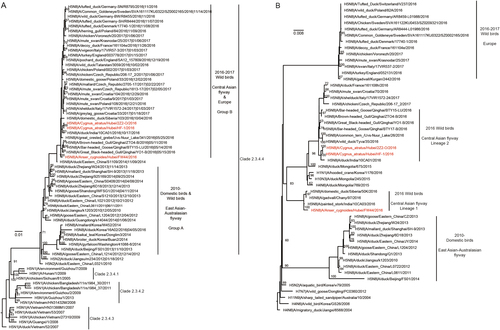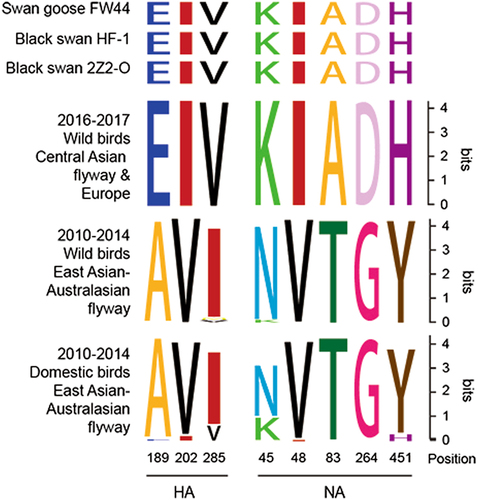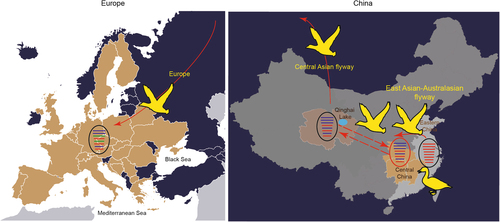Figures & data
The highest nucleotide similarity of the two H5N8 viruses in this study, with the sequences from global initiative on sharing all influenza data (GISAID)
The trees were rooted with the earliest strain among the selected sequences. The isolated H5N8 strains in this study are coloured in rose. Node labels indicate bootstrap values, and bootstrap values greater than 60 are shown

The strains in this study are indicated in rose, and the time of the most recent common ancestor (MRCA) of H5 and N8 is indicated with a rose arrow. The MRCA of Central Asian and European viruses is indicated with a yellow arrow. D domestic birds, W wild birds, QH Qinghai Lake, CN China, EC Eastern China, CC Central China, KR Korea, EU Europe, AS Asia, IN India, UNL Uvs-Nuur Lake, SB Siberia

Characterisation of selected molecular markers of H5N8 viruses
HA and NA (H3 and N2 numbering) are shown

The countries in which H5N8 outbreaks occurred in Europe are coloured in light brown. Transmission routes for H5N8 virus are indicated with a red solid arrow, and the probable transmission route between Qinghai and Central China is indicated with a red dotted arrow. Gene segments are coloured according to their origins. Notably, the PA and NP segments of H5N8 viruses in Europe were from unidentified viruses and are coloured in green

